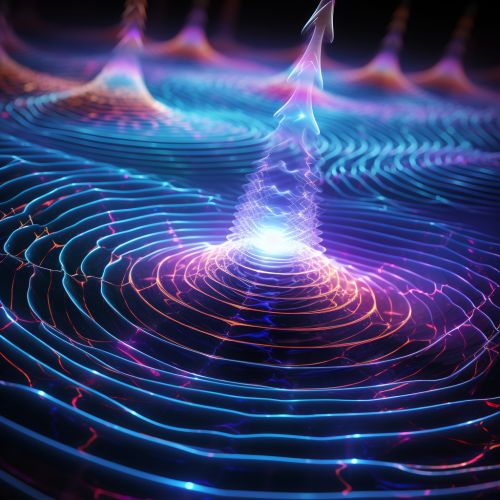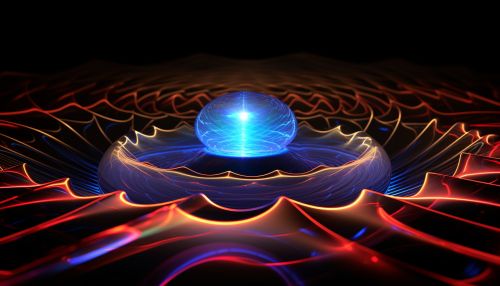The Physics of Superfluidity and its Phenomena
Introduction
Superfluidity is a state of matter in which matter behaves like a fluid with zero viscosity. This state is achieved at very low temperatures, and it allows superfluids to flow without losing kinetic energy. The concept of superfluidity is a part of quantum mechanics, a branch of physics that deals with phenomena on a very small scale, such as atoms and subatomic particles.


Discovery and History
The phenomenon of superfluidity was first discovered in liquid helium, by Pyotr Kapitsa and John F. Allen, and their colleagues, in 1937. They observed that helium II (the low-temperature form of liquid helium) flows without friction past any surface, which is a characteristic of superfluidity. This discovery was a significant milestone in the field of low temperature physics.
Theoretical Background
The theoretical understanding of superfluidity comes from the field of quantum mechanics. According to quantum mechanics, particles at very low temperatures can condense into the lowest energy state, forming a Bose-Einstein condensate. This condensate behaves as a single entity, leading to the phenomenon of superfluidity. The theory of superfluidity was further developed by Lev Landau, who proposed the two-fluid model for superfluid helium.


Superfluidity in Helium
Superfluidity is most commonly observed in helium, when it is cooled to temperatures below 2.17 K, a temperature known as the lambda point. Below this temperature, helium enters a superfluid phase, known as helium II. In this phase, helium exhibits strange properties, such as flowing without friction and creeping along surfaces against gravity. These properties are a direct consequence of the principles of quantum mechanics.
Superfluidity in Other Systems
While helium is the most well-known superfluid, superfluidity can also occur in other systems. For example, superfluidity has been observed in ultra-cold gases of alkali atoms, and in certain high-temperature superconductors. These systems provide additional platforms for studying the properties of superfluids and the underlying principles of quantum mechanics.


Phenomena Associated with Superfluidity
Superfluids exhibit a number of unique phenomena, which are not observed in ordinary fluids. These include:
- Quantum Vortices: In a rotating superfluid, the fluid forms quantized vortices. These vortices are a direct consequence of the quantum mechanical nature of superfluids.
- Second Sound: In a superfluid, heat can propagate in a wave-like manner, similar to sound. This phenomenon is known as second sound.
- Superfluid Film Creep: Superfluids can flow against gravity and form a thin film on the walls of the container. This is known as superfluid film creep.


Applications of Superfluidity
While superfluidity is primarily a topic of fundamental research, it also has potential applications in various fields. For example, the study of superfluids can provide insights into the behavior of other quantum systems, such as superconductors and quantum computers. Moreover, the unique properties of superfluids can be used to develop new technologies, such as ultra-sensitive rotation sensors.
